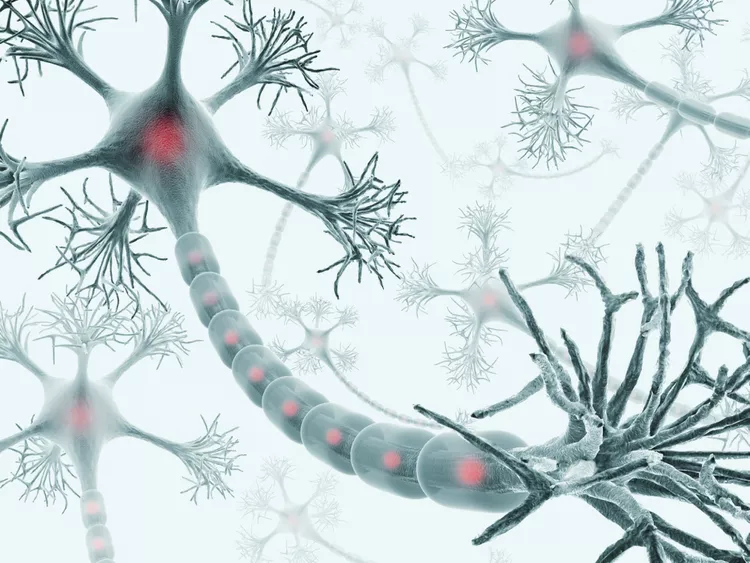The world of superconductors is a realm where the ordinary laws of electricity and magnetism are turned on their head. Imagine a universe where electricity can flow indefinitely without losing a single bit of energy, where materials can levitate above magnets as if defying gravity, and where the tiniest particles of matter cooperate in ways that seem almost magical. This is the world of superconductivity, a strange and fascinating phenomenon that has captured the imagination of scientists and dreamers alike. At the heart of this mystery is a concept that seems simple but challenges our deepest understanding: zero electrical resistance. In superconductors, resistance—the natural tendency of materials to oppose the flow of electric current—disappears entirely. Electricity, in this strange world, flows forever without friction, without heating the wires, and without decay.
Superconductivity was first discovered over a century ago, in 1911, by the Dutch physicist Heike Kamerlingh Onnes. Working in Leiden, Onnes cooled mercury to temperatures near absolute zero and noticed that its electrical resistance suddenly vanished. It was as if the electrons within the metal had decided to move in perfect harmony, forming an invisible dance that encountered no obstacles. At the time, this discovery seemed almost supernatural, a glimpse into a hidden layer of reality where matter behaved in ways impossible to imagine in the warmth of our everyday world.
The implications were staggering. If resistance could truly disappear, electricity could be transmitted across vast distances without loss. Powerful magnets could be constructed without heat generation, and entire fields of physics and engineering could be revolutionized. Yet the deeper understanding of why this happened would elude scientists for decades, hiding in the intricate and mysterious interactions of quantum mechanics.
The Mystery of Resistance
To appreciate the wonder of superconductors, one must first understand what resistance is. In ordinary materials, like copper or aluminum, electrons move through a lattice of atoms. As they travel, they collide with impurities, defects, and vibrations of the atomic lattice—thermal motion known as phonons. Each collision slows the electrons, converts some of their energy into heat, and creates the resistance that opposes the flow of electric current. This is why wires warm up when carrying electricity and why power plants lose energy as heat during transmission. Resistance is the fundamental friction of the electrical world, the invisible barrier that prevents perfect energy flow.
In superconductors, however, this friction disappears completely. At a critical temperature, often near absolute zero, electrons pair up in a peculiar arrangement known as Cooper pairs. These pairs behave collectively rather than individually, moving through the atomic lattice as a single, coherent entity. Like dancers perfectly synchronized in a grand ballet, they avoid the obstacles that would normally scatter individual electrons. The result is astonishing: a material that allows current to flow endlessly without losing energy, even over years or decades. This is not merely a reduction in resistance; it is the complete annihilation of it.
The Quantum Ballet of Cooper Pairs
The concept of Cooper pairs is as beautiful as it is counterintuitive. In the classical world, electrons, being negatively charged, repel each other. They resist proximity, each one wary of the other’s negative force. Yet at ultracold temperatures, a subtle attraction emerges, mediated by vibrations in the atomic lattice. One electron slightly distorts the lattice as it moves, creating a region of positive charge that attracts a second electron. Bound by this invisible thread, the two electrons form a Cooper pair. Alone, an electron is chaotic and prone to collisions; together, as part of a pair, it moves in perfect harmony with the others.
These pairs occupy a collective quantum state that spans the entire superconductor. Unlike normal electrons, which scatter and lose energy, Cooper pairs move without obstruction. The material becomes a unified quantum object, a macroscopic manifestation of the strange and counterintuitive laws of quantum mechanics. It is as if the entire superconductor becomes a single, perfectly coordinated organism, with electrons flowing like a river that encounters no rocks, no eddies, no resistance.
The mathematical elegance of this phenomenon was captured in the BCS theory, formulated in 1957 by John Bardeen, Leon Cooper, and Robert Schrieffer. The theory provided a framework to explain why certain materials suddenly lose resistance at low temperatures and why their quantum state is so remarkably stable. It revealed that superconductivity is not just a property of electrons but a dance between electrons and the atomic lattice, a quantum choreography that unfolds at temperatures approaching absolute zero.
Magnetic Mysteries and the Meissner Effect
Superconductors do not merely defy resistance; they also challenge our understanding of magnetism. One of the most striking phenomena is the Meissner effect, discovered in 1933 by Walther Meissner and Robert Ochsenfeld. When a superconductor is cooled below its critical temperature in the presence of a magnetic field, it actively expels the field from its interior. Magnets do not merely float above a superconductor due to repulsion; the superconductor creates currents on its surface that exactly cancel the magnetic field inside.
The Meissner effect reveals that superconductivity is more than zero resistance. It is a state of matter with its own internal rules, a quantum state that reacts to external forces in ways classical physics cannot predict. The expulsion of magnetic fields enables levitation experiments that seem like science fiction: magnets suspended in midair, spinning with no friction, hovering as if by magic. This strange interplay between electricity and magnetism underscores the quantum nature of superconductivity, a window into the invisible structures that govern the universe at its smallest scales.
High-Temperature Superconductors and New Frontiers
For decades, superconductivity was thought to exist only at temperatures near absolute zero, requiring expensive and complex cooling with liquid helium. But in 1986, a breakthrough occurred: scientists discovered materials that became superconducting at much higher temperatures, above the boiling point of liquid nitrogen. These “high-temperature superconductors” opened new possibilities for technology, energy transmission, and quantum computing.
Yet these materials introduced new mysteries. Unlike conventional superconductors, whose behavior could be explained by the BCS theory, high-temperature superconductors did not fit neatly into existing models. Their electrons interact in more complex ways, forming patterns and fluctuations that continue to challenge physicists. The search for a complete understanding of these materials is ongoing, representing one of the most tantalizing puzzles in condensed matter physics.
High-temperature superconductors promise technological revolutions. Power lines could transmit electricity without loss across continents. Maglev trains could glide silently at incredible speeds. Medical imaging devices could become smaller, more efficient, and more powerful. Yet even as we envision these futures, the materials themselves remind us that nature’s complexity often exceeds our ability to predict or control it fully.
Superconductors and the Quantum Age
Superconductivity is not merely a curiosity of cold metals; it is a doorway into the quantum world. In recent decades, superconductors have become central to the development of quantum computers, devices that harness quantum states to perform computations far beyond the capabilities of classical machines. Superconducting qubits, the fundamental units of these computers, rely on the coherent flow of electrons without resistance. Even the smallest disturbance—a collision, a vibration, a stray magnetic field—can disrupt their delicate state. Understanding and controlling superconductivity is thus essential for the next technological revolution.
Moreover, superconductors challenge our intuition about time and energy. Persistent currents can flow for years without decay, suggesting a form of stability that seems eternal. Magnetic fields can be trapped and manipulated with precision, hinting at possibilities for memory storage and energy control that classical physics cannot offer. The world of superconductors is a laboratory for both imagination and practicality, a place where dreams of frictionless transport, limitless energy, and levitating technologies move closer to reality.
Philosophical Reflections on Zero Resistance
Superconductivity is more than a scientific curiosity; it is a metaphor for harmony and coherence in a chaotic universe. The zero resistance of superconductors represents the triumph of order over disorder, of collective cooperation over individual conflict. In a world where friction, decay, and energy loss are the norm, superconductors embody a state of near-perfection, a fleeting glimpse of what is possible when particles move together in unison.
The study of superconductors also reminds us of the limits of human understanding. Even with advanced mathematics, precise experiments, and sophisticated theories, nature continues to surprise. High-temperature superconductors, unconventional materials, and exotic quantum phases reveal that the universe harbors secrets far stranger than we imagine. To study superconductors is to engage in a dialogue with reality itself, listening to the whispers of electrons and lattices, deciphering the hidden language of matter.
The Future of Superconductivity
The strange world of superconductors is not static; it is a frontier constantly expanding. Researchers continue to explore new materials, new phenomena, and new applications. Room-temperature superconductivity, long considered a dream, has recently shown tantalizing experimental hints. If achieved reliably, it could revolutionize energy, transportation, medicine, and computing, creating a world where electricity flows without loss, where magnetic levitation is commonplace, and where quantum technologies become part of everyday life.
Yet even as we imagine these futures, the mystery remains. Superconductivity at zero resistance is a window into the fundamental laws of the universe, a reminder that matter can behave in ways that defy our expectations, and that the quantum world is stranger and more beautiful than we can fully comprehend. Each experiment, each new discovery, brings us closer to understanding, but also reveals new questions, new enigmas, and new wonders.
Superconductors invite us to think differently about electricity, energy, and the very nature of matter. They challenge us to reconcile intuition with reality, to see the invisible forces that shape our world, and to marvel at the dance of electrons in perfect harmony. In this strange world, resistance disappears, and with it, the limitations of what we thought was possible. Electricity flows forever, magnets float as if by magic, and the universe whispers its deepest secrets to those who dare to listen.
The study of superconductors is, in every sense, a journey to the edge of human understanding, a testament to the elegance of nature, and a promise that the strange, beautiful, and extraordinary always awaits just beyond the horizon.






